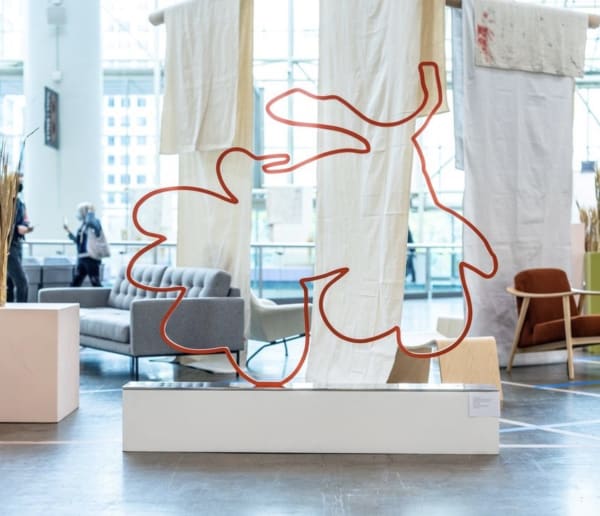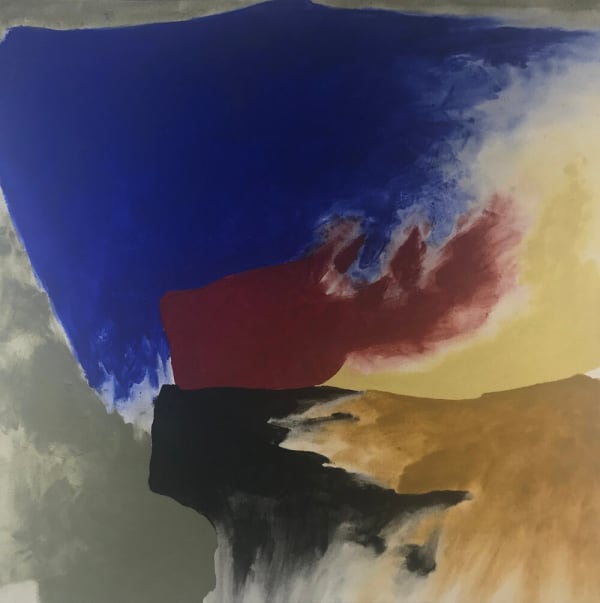Friedel Dzubas German-American, 1915-1994
In a prolific career that spanned nearly five decades, Friedel Dzubas created a wide-ranging visual language from counterpoised abstract shapes of brushed color, which he juxtaposed, overlapped, and opened up to reveal his gessoed grounds. These embodied color forms constitute the overriding motif of Dzubas's mature style and stand in contrast to the stain paintings by Morris Louis, Kenneth Noland, Jules Olitski, and Helen Frankenthaler, among others. Pouring or brushing acrylic paint onto raw canvas, these painters created fields of color that took on the appearance of dyed cloth. Dzubas, in contrast, primed every painting he ever made, but for a small series of bedsheet paintings in 1957 and a group of "black drawings" created between 1959 and 1962. Like Rothko and Newman, Dzubas applied paint over his grounds in a thin, texturally uniform manner. Yet, it was not until 1966-a decade after his painter colleagues-that Dzubas abandoned oils for synthetic acrylic colors. He would utilize "Magna" acrylic for the remainder of his career. Such flattened fields of hue were theorized by celebrated critic Clement Greenberg as examples of "Post Painterly Abstraction" or generally, "Color Field" painting. (Patricia L Lewy, PhD, Director, Friedel Dzubas Estate Archives)
-

Art Miami + Online 2021
A curated selection of museum works, exclusively online 30 Novembre - 5 Décembre 2021Rukaj Gallery's Art Miami + Online booth features an exceptional selection of paintings and works on paper by modern and contemporary artists including Friedel Dzubas,...Lire plus -

Art Toronto 2021
29 Octobre - 5 Novembre 2021Lire plus -

Art Toronto 2013
25 - 28 Octobre 2013Lire plus
-

Art Miami + Online 2021
A curated selection of museum works, exclusively online 30 Novembre - 5 Décembre 2021Rukaj Gallery's Art Miami + Online booth features an exceptional selection of paintings and works on paper by modern and contemporary artists including Friedel Dzubas,...Lire plus -

Art Toronto 2021
29 Octobre - 5 Novembre 2021Lire plus -

Art Toronto 2013
25 - 28 Octobre 2013Lire plus















